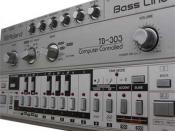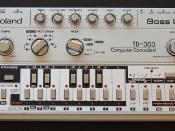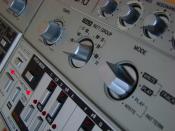The success of the British dance music scene, which still flourishes today, can be contributed to the coming together of new music, the alien, trippy sounds of acid house, and a new (at the time), euphoric love drug known as ecstasy (MDMA). Yet, in order to understand this immense cultural explosion, one must examine it's development within a historical and social context, and examine the re - percussions of this development on music and society.
As with most successful music scenes in Britain, the music was borrowed from the US then used, improved, and sold back to the US. House music was first and foremost music of Chicago's post - disco era. The club 'Music Box' and it's resident Dj Ron Hardy, were pivotal in pushing the house or 'warehouse' sounds of Chicago. House music borrowed raw elements from disco. Using simple production technologies, producers would re - edit existing disco tunes and add booming bass kicks.
By the mid 80's, Chicago's underground scene flourished, but no one foresaw the impact the music would have outside the city, least of all in Britain.
The British club scene was tame in comparison. Through the 80's, until the explosion of Acid House in '87, the music played in most clubs was a predominant mix of soul music in the North and old funk and reggae records in the South. Occasionally hip - hop, electro and house records would be played, but these new sounds were largely dismissed. The uptight scene was more about dressing up and being seen, about being cool, rather than dancing and enjoying oneself.
Although some house tunes were being imported from Chicago and being played in British clubs, the import market would not explode until acid house arrived. The North was the first to accept house music.


